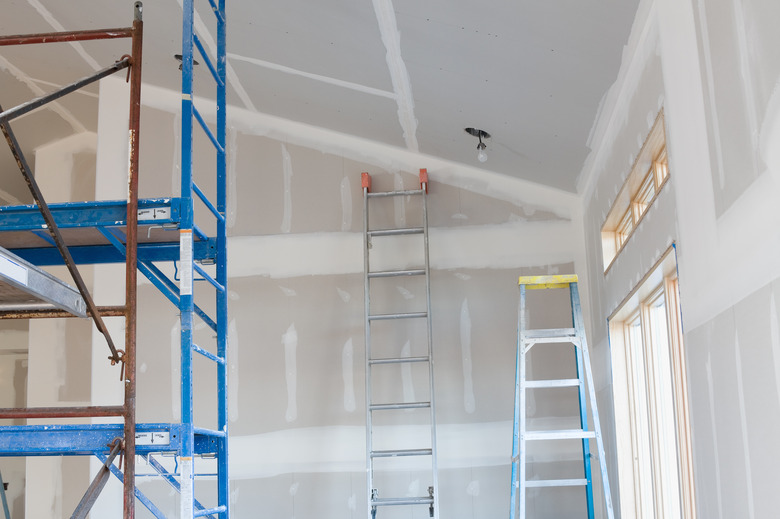Joint Compound Vs. Topping Compound
When you shop for joint compound to tape and finish new drywall, you're usually looking for all-purpose joint compound, which as the name implies, is good for all phases of taping and finishing. However, if you want to add a professional touch to the finished wall and exert less effort getting it that way, you should look for topping compound to use for the final coat. It's lightweight, which makes it easier to work, it dries faster than all-purpose joint compound and it's easier to sand. You might find pre-mixed topping compound, but it's more common to find it in powder form, which means you have to mix it yourself. That isn't a disadvantage, because that means you can get the exact consistency you need.
Three Types of Pre-Mixed Mud
Mud is the trade term for joint compound. Ready-mixed mud comes in three basic varieties: Taping compound dries hard and works well for embedding paper drywall tape over seams. Topping compound is less durable but shrinks very little and sands easily, so it is effective for covering taped seams and providing a final, smooth finish coat. Big box stores typically offer a selection of topping compound. For instance, you'll usually find two or three brands of topping mud at Home Depot. All-purpose joint compound is a compromise between the two other types.
The Hot Mud Option
Quick-setting joint compound, or hot mud, dries via a chemical reaction initiated by mixing the powder with water, in much the same way as concrete mix. The mixture dries within five to 90 minutes, depending on the variety, making it an effective choice when you're rushing to meet a deadline. But creating a smooth finish with quick-setting joint compound is difficult because the mixing process often leaves the compound clumpy. Also, quick-setting joint compound is difficult to sand.
Topping Compound to the Rescue
If you use hot mud for taping, cover it with topping joint compound, which works well for creating smooth, even coats. For example, you might embed paper tape in quick-setting joint compound, apply a thick coat over the tape to hide it and let the compound dry for the specified time. After that, apply topping compound in a smooth coat over the dried joint compound and wait a day for it to dry. This strategy allows you to apply three coats — the tape coat, the filling coat and the topping coat — in a single 24-hour span.
Topping Compound Is Not All Purpose
If your budget is low or your project is small, all-purpose joint compound can fulfill all your basic needs. Topping compound, on the other hand, doesn't work well for anything but creating a smooth final finish. The major disadvantages in relying exclusively on all-purpose joint compound are that it is relatively difficult to sand and it shrinks more, meaning you might have to apply extra coats to fill large gaps and holes. That's a disadvantage, but if you have to go with just one one type of mud, you should make it the all-purpose variety, not topping compound.
